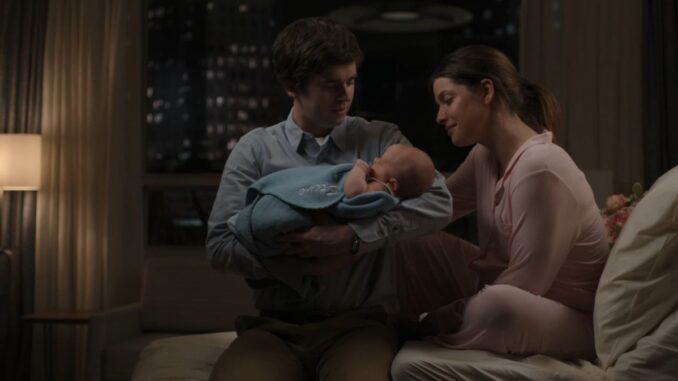
When The Good Doctor premiered on ABC in 2017, few viewers knew that the series was actually based on a South Korean drama of the same name. Fewer still could have predicted the massive impact it would have across continents, cultures, and conversations. What began as a local Korean drama in 2013 transformed — through smart adaptation and powerful storytelling — into one of the most successful global television franchises of the decade.
But The Good Doctor isn’t just a remake. It’s a cultural bridge, a narrative that has transcended language barriers to deliver a universal message: that empathy, resilience, and difference are not just valuable — they’re vital.
The Korean Roots of a Global Story
Before Freddie Highmore stepped into the role of Dr. Shaun Murphy, there was Joo Won, the South Korean actor who originated the character in the 2013 K-drama Good Doctor. His portrayal of a young autistic savant working in pediatric surgery was groundbreaking for Korean television — where discussions around neurodiversity were still limited.
The Korean version was a critical and commercial success, praised for its emotional storytelling and strong performances. It ran for 20 episodes and won multiple awards, including Best Drama at the Korea Drama Awards. The show’s impact was enough to catch the eye of Daniel Dae Kim, the Korean-American actor and producer who would go on to acquire the rights and pitch the concept to American networks.
What made the story so adaptable — and so universally resonant — was its emotional core: a character who, despite neurological challenges and social misunderstanding, dares to dream and heal in a world that often excludes him.
Cultural Translation Done Right
Adapting foreign television can be tricky. What works in one culture might not land in another. But the American version of The Good Doctor, helmed by David Shore (creator of House), approached the adaptation with respect, creativity, and vision.
Rather than simply copying the Korean version scene for scene, Shore and his team reimagined the character of Shaun Murphy in a new context — one shaped by the dynamics of American healthcare, cultural perceptions of autism, and the ethics of modern surgery.
Freddie Highmore’s version of Shaun was more emotionally restrained than Joo Won’s, reflecting not only the actor’s unique approach but also the different social landscape in which the show existed. The pacing, tone, and setting changed — but the heart of the story remained intact.
This wasn’t imitation. It was evolution. And it paid off.
Breaking Records and Borders
Since its U.S. premiere, The Good Doctor has been broadcast in over 100 countries, dubbed or subtitled in dozens of languages, and consistently ranked as one of the most-watched medical dramas in the world.
Its success even circled back to its roots: in countries like Japan, Turkey, and China, The Good Doctor inspired new local remakes based on either the Korean or American versions. This made it one of the rare international TV properties to create a global storytelling ripple effect — a franchise where each version adds a cultural lens to the same human story.
But more than ratings or remakes, the true measure of its impact lies in the conversations it has sparked — about autism, inclusion, hospital ethics, and the power of belief.
The Show’s Role in Autism Awareness
Both the Korean and American versions of The Good Doctor were praised for raising awareness about autism — but the American version, given its wider reach, had a particularly significant influence on public understanding.
Autism spectrum disorder (ASD) has long been underrepresented or misrepresented in mainstream media. Shaun Murphy’s character — while not intended to represent all people with autism — provided a rare, empathetic portrayal that resonated with many viewers, both neurotypical and neurodivergent.
The show’s global popularity meant that people from vastly different cultures could watch and say, “That’s what it can look like. That’s what support can mean. That’s what inclusion can feel like.”
And in this way, a Korean drama became not just a TV show — but a tool for social empathy, an invitation to think differently about intelligence, emotion, and communication.
From Medical Drama to Emotional Compass
At its core, The Good Doctor is about healing — not just bodies, but people. The hospital is a metaphor for a world that moves too fast, judges too quickly, and often forgets the humanity of those we don’t understand.
And that’s the genius of this franchise. Whether it’s Shaun Murphy in San Jose or Park Shi-on in Seoul, the story doesn’t change: it’s about what it means to care when you’re told you can’t. It’s about how the greatest surgeons — and the greatest people — are often the ones we overlook.
Through each character, each culture, and each adaptation, The Good Doctor shows us that empathy is universal. That intelligence comes in many forms. That love — for others and for oneself — is not a matter of ability, but of courage.
A Legacy Still Unfolding
Today, The Good Doctor continues to evolve. The U.S. version is approaching the end of its run, but talks of spinoffs and other global adaptations are ongoing. Freddie Highmore has become a face of a movement far larger than television. And the show’s creators continue to explore new storytelling directions that honor the past while embracing the future.
From a single Korean drama to a global television phenomenon, The Good Doctor has defied every expectation. Not just because it entertains — but because it heals, educates, and connects.
